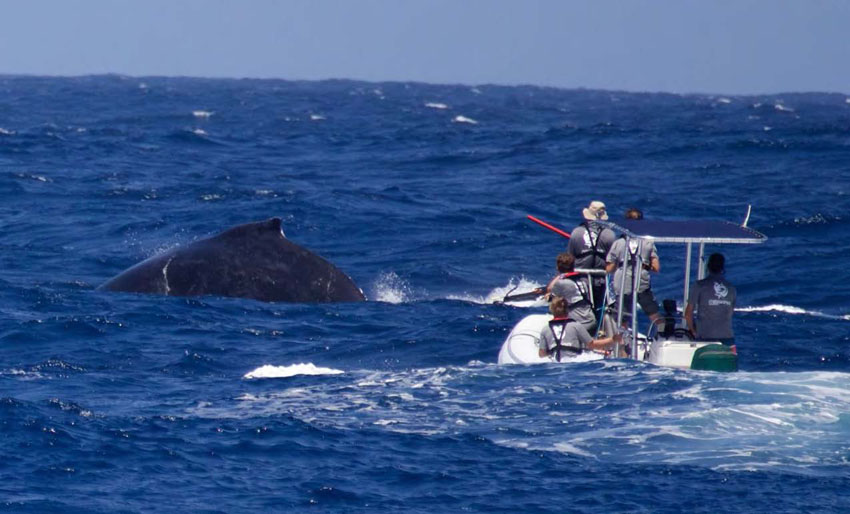The goal of Megara is to increase our knowledge about humpback whales, from every angle. The third Megara mission took place this year, on March 13-18, as the Réserve Naturelle de Saint-Marin coordinated Megara with the association, Megaptera, whose president is Michel Vély, along with the Territorial Environmental Agency of Saint Barthélemy, the association “My School, My Whale,” and the support of the government of Anguilla, which helped facilitate the authorization required for exploration within its territorial waters. During the five days of the mission, a team of 15 participants used a catamaran as their base camp in the waters of Saint Martin, Anguilla, and Saint Barth. Results: 25 underwater listening tests, 60% of which were positive, and nine visual observations, which allowed for the localization of 33 bottlenose dolphins and 18 humpback whales. In state of rough seas, the team aboard a semi-rigid dinghy were able to successfully place a satellite beacon —which unfortunately remains silent— and taking two samples of skin which were carefully kept in the freezer while waiting to be sent to University of Groningen, which has a database of over 8,500 biopsies of humpback whales in the Atlantic. The multiplication of Megara missions increases this data, as well as observations, photographs, and DNA samples, which are fairly limited in the French West Indies. But the first results indicate that “our” whales are from the same population observed in the waters near Cape Verde. Anyone who is interested can follow this adventure thanks to the videographer aboard the boat!
Megara 2017 : Mission #3
L’équipe prête à poser une balise - The team ready to place a satellite beacon © Agence de l’environnement de Saint-Barth

Deux baleines à bosse - Two humpback whales © Agence de l’environnement de Saint-Barth

















